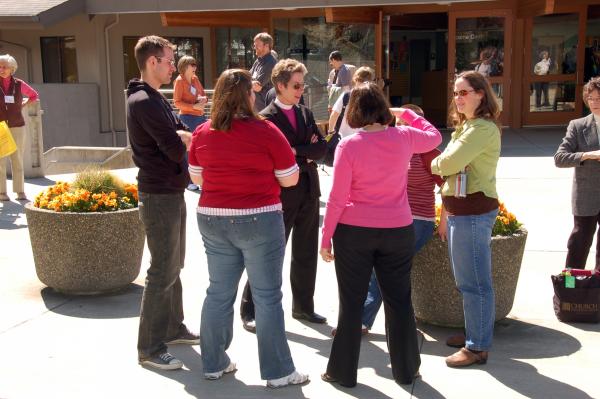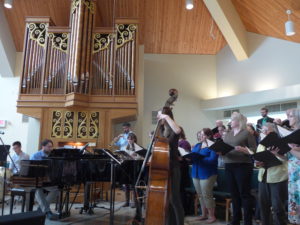
“Who are we?” is a core question for a congregation, but it can be hard to answer. I find congregations tend to have long mission statements that, while noble sounding, aren’t all that helpful when the congregation wants to invite people to come and experience life in that congregation. What is unique about a congregation? Why might one person find our congregation life-giving, while someone else find it not the place for them? If we can define the qualities or core identities of a congregation, we are more likely to understand what makes it attractive to some people and not so much to others. Then, we can better market our congregation to the people who will find it life-giving and a good place to grow in faith. I think of this definition as “the elevator speech”: how could I describe what is special about the congregation to someone as we ride together on a short elevator ride?

At St. Margaret’s Episcopal Church (Bellevue, WA) where I serve as rector, we’ve used several tools from the College for Congregational Development to help us try to understand and define our identity.
Using the “Societal and Organizational Influences” worksheet with several groups of parishioners, we first explored the history of the congregation. This 1960’s church-plant in a growing suburb of Seattle had many young professional families looking for a close-knit faith community in which they and their children would build relationships and develop their faith. Drawing upon the memories of the “long-timers” as well as the impressions of folks who’ve been part of the parish for a shorter time, we talked about what it was that helped make St. Margaret’s special from its earlier decades to the present. We agreed that at the core of the congregation has been a desire to see how God was at work in our everyday lives. People have longed for a relationship with God that was enhanced by their relationships with each other. Through these relationships, their faith life has been strengthened and supported, which enables them to serve God in their work, home, and civic life, and through social and advocacy efforts primarily in a local context. We realized that this core sense of identity had not changed over the years. We developed a slogan to describe this identity: Seeking the sacred in everyday life.
Then, we researched and discussed the current context: still a growing suburb of Seattle, but now multi-culturally, ethnically, and religiously very diverse. We recognized that in this new context, we wanted to consider what about our identity as an Episcopal congregation we had to offer to our geographic neighbors. Next, we used “The Organizational Culture of Anglicanism” (which is based upon John Westerhoff’s A People Called Episcopalians) during an adult education class to get a sense of which characteristics of Anglicanism were the ones that we held most dear to us. We taught the tool and gave each person a chance to choose the top-three characteristics that they preferred personally as well as the three that most reflected the congregation. Our greatest agreement was that the congregation valued the Liturgical/Biblical and Sacramental aspects of Anglican spirituality, along with the Comprehensive and Open-minded aspects of Anglican temperament. This exercise (which was fun to do) supported our considerations of the culture of the congregation.
 Having a better understanding of our congregation’s culture has helped us make decisions. For example, when we had an opportunity to start a new worship service, we decided to offer a traditional Episcopal liturgy (Compline) with a contemporary twist (set to jazz music). People come from the neighborhood to enjoy the beauty of Anglican liturgy. Some stay for refreshments afterward, and others make it their regular worship time. New relationships are developing, and the congregation continues to live into its identity.
Having a better understanding of our congregation’s culture has helped us make decisions. For example, when we had an opportunity to start a new worship service, we decided to offer a traditional Episcopal liturgy (Compline) with a contemporary twist (set to jazz music). People come from the neighborhood to enjoy the beauty of Anglican liturgy. Some stay for refreshments afterward, and others make it their regular worship time. New relationships are developing, and the congregation continues to live into its identity.
The Rev. Chris Jillard
Rector of St. Margaret’s Episcopal Church, Bellevue, Washington